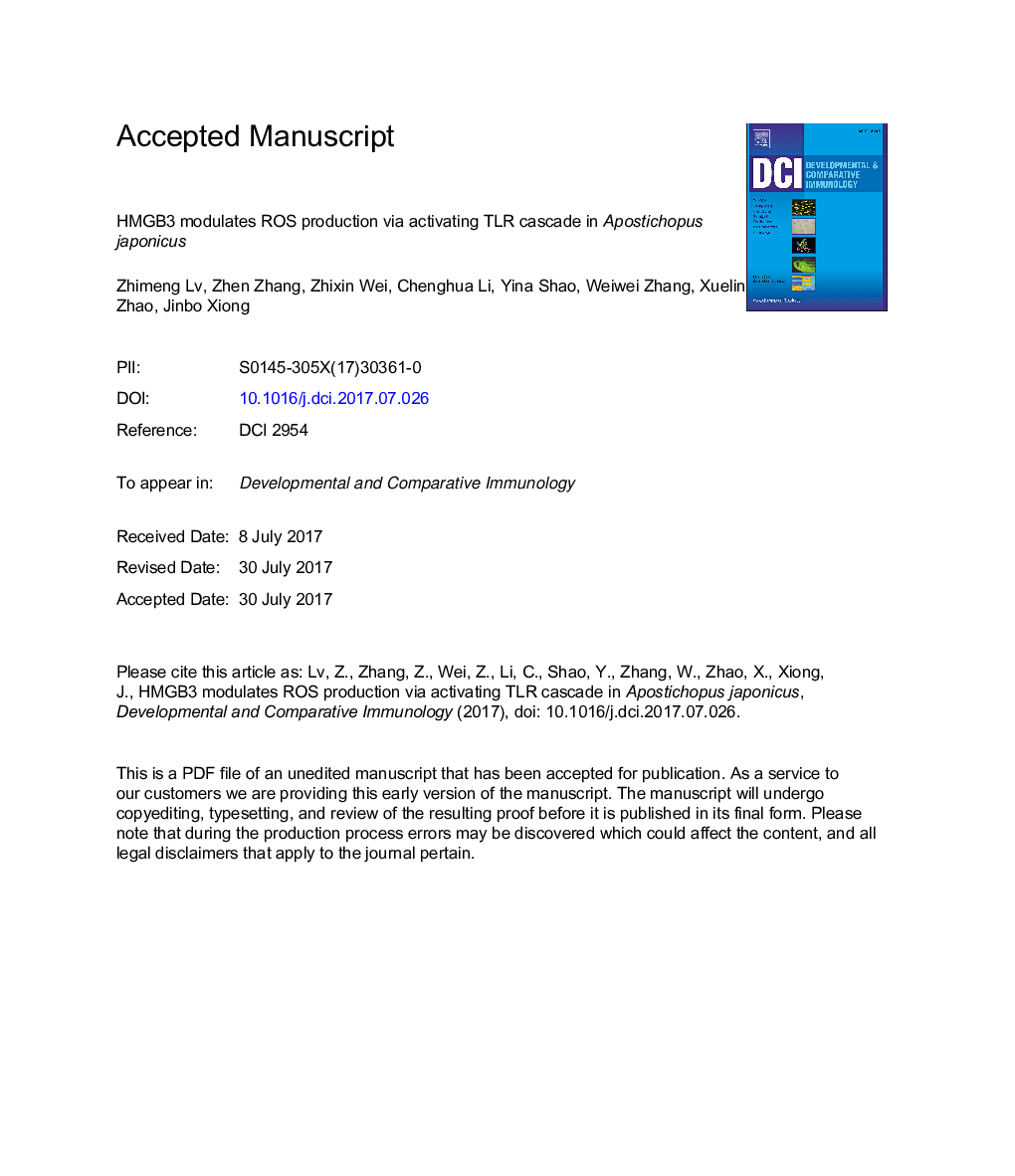| کد مقاله | کد نشریه | سال انتشار | مقاله انگلیسی | نسخه تمام متن |
|---|---|---|---|---|
| 5540057 | 1553555 | 2017 | 30 صفحه PDF | دانلود رایگان |
عنوان انگلیسی مقاله ISI
HMGB3 modulates ROS production via activating TLR cascade in Apostichopus japonicus
دانلود مقاله + سفارش ترجمه
دانلود مقاله ISI انگلیسی
رایگان برای ایرانیان
کلمات کلیدی
موضوعات مرتبط
علوم زیستی و بیوفناوری
بیوشیمی، ژنتیک و زیست شناسی مولکولی
زیست شناسی تکاملی
پیش نمایش صفحه اول مقاله

چکیده انگلیسی
High mobility group box protein 3 (HMGB3) regulates proliferation and inflammatory response in vertebrates. However, its functional roles in invertebrates are largely unknown. In this study, a HMGB3 homologue molecule was identified from Apostichopus japonicus (designated as AjHMGB3) by RACE approach. The full-length cDNA of AjHMGB3 was of 2298 bp with an open reading frame of 1320 bp encoding a 439-amino-acid (aa) residue protein. Structural analysis then conducted and the results revealed that AjHMGB3 processed two conserved HMGBs (133-204 and 210-279 aa) and an acidic tail. The results of subsequent multiple sequence alignment and phylogenetic analysis both indicated that AjHMGB3 belongs to a new member of HMGB3 protein subfamily. Furthermore, AjHMGB3 was expressed in all examined tissues except in tentacles and particularly highly expressed in the intestine, as indicated by spatial expression analysis results. The Vibrio splendidus challenge in vivo and lipolysaccharide (LPS) stimulation in vitro can significantly upregulate the mRNA expression of AjHMGB3 in coelomocytes. This finding is consistent with the expression profiles of TLR cascade members. We further investigated the expression profiles of AjMyD88 and Ajp105 after the gain- or loss-of-function of AjHMGB3 in coelomocytes. The results showed that AjMyD88 and Ajp105 were upregulated 2.19- and 2.83-fold in AjHMGB3 overexpressed treatment and downregulated 0.38- and 0.43-fold in the AjHMGB3 silencing group. The p50 subunit displayed expression profiles that are identical to those of AjMyD88 and Ajp105 according to the Western blot results. In the same condition, the respiratory burst was increased by 37.5% in the AjHMGB3 overexpressed group and depressed by 28.2% in the AjHMGB3 knock-down group. Our present findings collectively suggested that AjHMGB3 acted as an NF-κB activator and produced ROS production in sea cucumbers.
ناشر
Database: Elsevier - ScienceDirect (ساینس دایرکت)
Journal: Developmental & Comparative Immunology - Volume 77, December 2017, Pages 128-137
Journal: Developmental & Comparative Immunology - Volume 77, December 2017, Pages 128-137
نویسندگان
Zhimeng Lv, Zhen Zhang, Zhixin Wei, Chenghua Li, Yina Shao, Weiwei Zhang, Xuelin Zhao, Jinbo Xiong,